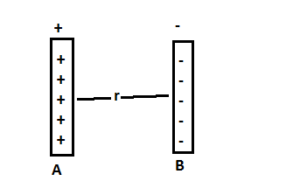Case study question of Physics – Electric charges and field
Case study 3:- Animals emit low frequency electric fields due to a process known as osmoregulation. This process allows the concentration of ions (charged atoms or molecules) to flow between the inside of our bodies and the outside. In order for our cells to stay intact, the flow of ions needs to be balanced. But balanced doesn’t necessarily mean equal. The concentration of ions within a shrimp’s body is much lower than that of the sea water it swims in. Their voltage or potential sifference generated between the two concentrations across ‘leaky’ surfaces, can then be measured.
Read the given passage carefully and give the answer of the following questions:
Q 1:- The Gaussian surface for ions in the body of animals:
(a) Can pass through a continuous charge distribution
(b) vannot pass through a continuous charge distribution
(c) Can pass through any system of discrete charges
(d) Can pass through a continuous charge distribution as well any system of discrete charge
Q 2:- Gauss’s law is valid for :
(a) Any closed surface
(b) Only regular close surfaces
(c) Any open surface
(d) Only irregular open surfaces
Q 3:- The electric field inside a shrimp’s body of a uniform charge density is:
(a) Zero
(b) Constant different from zero
(c) Proportional to the distance from the curve
(d) None of the above
Q 4:- If a small piece of linear isotropic dielectric is swallowed by a shrimp and inside the body it is influenced by an electric field E, then the polarisation P is:
(a) Independent of E
(b) Inversely proportional to E
(c) Directly proportional to √E
(d) Directly proportional to E
Q 5:- Field due to multiple charges/ions inside shrimp’s body at a point is found by using:
(i) Superposition principle
(ii) Coulamb’s law
(iii) Law of conservation of charges
Choose the correct answer:
(a) (i) and (ii)
(b) (ii) and (iii)
(c) (i) and (iii)
(d) (i), (ii) and (iii)
Answer :- 1. (a) Can pass through a continuous charge distribution
2. (a) Any closed surface
3. (a) Directly proportional to E
4. (d) Directly proportional to E
5. (a) (i) and (ii)
Case study 1:- A charge is a property associated with the matter due to which it experiences and produces an electric and magnetic fields. Charges are scalar in nature and they add up like real numbers. Also, the total charge of an isolated system is always conserved. When the objects rub against each other, charges acquired by them must be equal and opposite.
Read the given passage carefully and give the answer of the following questions:
Q 1:- The cause of charging is:
(a) The actual transfer of protons
(b) The actual transfer of electrons
(c) The actual transfer of neutrons
(d) None of the above
Answer :- See all answer
Case study 2:- Coulamb’s law states that the electrostatic force of attraction or repulsion acting between two stationary points charges is given by
![]()
Where F denotes the force between two charges ![]() and
and ![]() separated by a distance r in free space,
separated by a distance r in free space, ![]() is a constant known as permittivity of free space. Free space is vacuum and may be taken to be air practically.
is a constant known as permittivity of free space. Free space is vacuum and may be taken to be air practically.
If free space is replaced by a medium, then ![]() is repaced by
is repaced by ![]() or
or ![]() , where k is known as dielectric constant or relative permittivity.
, where k is known as dielectric constant or relative permittivity.
Read the given passage carefully and give the answer of the following questions:
Q 1:- In coulamb’s law, ![]() , then on which of the following factors does the proportionality constant k depends ?
, then on which of the following factors does the proportionality constant k depends ?
(a) Electrostatic force acting between the two charge
(b) Nature of the medium between the two charges
(c) Magnitude of the two charges
(d) Distance between the two charges
Answer :- See the answer
Case study 5:- Surface charge density is defined as charge per unit surface area of surface charge distribution i.e., σ = dq/ds. Two large thin metal plates are parallel and close to each other. On their inner faces, the plates have surface charge densities of opposite sign having magnitude of ![]() C/m² as shown. The intensity of electric field at a point is
C/m² as shown. The intensity of electric field at a point is ![]() , where
, where ![]() permittivity of free space.
permittivity of free space.

Read the given passage carefully and give the answer of the following questions:
Q 1:- What is the value of E in the outer region of the first plate ?
Solution:- See full solution